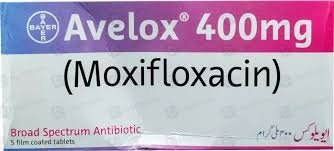
Introduction:
Avelox, also known by its generic name moxifloxacin, is a potent antibiotic that belongs to the fluoroquinolone class. Initially approved by the FDA in 1999, Avelox has been widely prescribed to treat various bacterial infections. However, its usage comes with both benefits and potential risks, prompting a closer examination of its uses, side effects, and precautions.
Uses of Avelox:
- Respiratory Tract Infections:
Avelox is commonly prescribed for treating respiratory tract infections such as acute bacterial sinusitis, community-acquired pneumonia, and exacerbations of chronic bronchitis. Its broad-spectrum activity against both gram-positive and gram-negative bacteria makes it effective in combating these infections. - Skin and Soft Tissue Infections:
In cases of skin and soft tissue infections caused by susceptible bacteria, Avelox may be prescribed as an effective treatment option. These infections include cellulitis, abscesses, and wound infections. - Intra-abdominal Infections:
Avelox is also indicated for the treatment of intra-abdominal infections, including complicated intra-abdominal infections caused by susceptible pathogens. It can be used either alone or in combination with other antibiotics depending on the severity and causative organisms. - Sexually Transmitted Infections:
Certain sexually transmitted infections (STIs) caused by susceptible bacteria can be treated with Avelox. Conditions such as pelvic inflammatory disease (PID) and epididymitis can be effectively managed with this antibiotic. - Urinary Tract Infections:
Avelox demonstrates efficacy in treating uncomplicated and complicated urinary tract infections caused by susceptible bacteria. Its ability to penetrate tissues and achieve high concentrations in urine makes it a valuable option in these cases.
Side Effects of Avelox:
While Avelox can be an effective treatment for bacterial infections, it is important to be aware of potential side effects that may occur during its use. Some common side effects include:
- Gastrointestinal Disturbances:
Nausea, vomiting, diarrhea, and abdominal pain are among the gastrointestinal side effects associated with Avelox use. These symptoms are usually mild to moderate and resolve once the treatment is completed. - Central Nervous System Effects:
Avelox may cause central nervous system side effects such as headache, dizziness, and insomnia. In rare cases, more serious effects like seizures or confusion may occur, particularly in patients with a history of neurological disorders. - Tendon Rupture and Tendonitis:
Fluoroquinolone antibiotics, including Avelox, have been linked to an increased risk of tendon rupture and tendonitis, particularly in elderly patients and those receiving concomitant corticosteroid therapy. Tendon pain, swelling, or inflammation should be promptly reported to a healthcare provider. - Cardiac Effects:
Avelox may prolong the QT interval, which can lead to serious cardiac arrhythmias, including torsades de pointes. Patients with a history of QT prolongation, those taking medications that also prolong the QT interval, or those with electrolyte imbalances may be at higher risk. - Allergic Reactions:
In rare cases, Avelox can cause allergic reactions ranging from mild skin rashes to severe anaphylaxis. Patients experiencing symptoms such as hives, itching, difficulty breathing, or swelling of the face and throat should seek immediate medical attention.
Precautions and Considerations:
Before prescribing Avelox, healthcare providers should consider several factors to ensure its safe and appropriate use:
- Resistance Patterns:
Due to increasing antibiotic resistance, healthcare providers should consider local resistance patterns when selecting Avelox for treatment. Empirical therapy should be guided by culture and susceptibility testing whenever possible. - Drug Interactions:
Avelox has the potential to interact with other medications, including antacids containing magnesium or aluminum, sucralfate, and certain anticoagulants. Healthcare providers should review the patient’s medication list and consider potential interactions before prescribing Avelox. - Pregnancy and Lactation:
Avelox should be used with caution in pregnant women, especially during the first trimester, as its safety has not been established. It is also excreted in breast milk and may cause harm to nursing infants, so breastfeeding should be avoided during treatment. - Renal Impairment:
Dosage adjustments may be necessary in patients with renal impairment to prevent accumulation of Avelox and minimize the risk of adverse effects. Close monitoring of renal function and adjustment of dosage as needed are recommended in these patients. - Patient Education:
Patients prescribed Avelox should be educated about the importance of completing the full course of treatment as directed, even if their symptoms improve before the medication is finished. They should also be instructed to report any adverse reactions or changes in their condition to their healthcare provider.
Conclusion:
Avelox is a valuable antibiotic with broad-spectrum activity against various bacterial infections. While it can be effective in treating respiratory, skin, intra-abdominal, and urinary tract infections, healthcare providers and patients should be aware of its potential side effects and precautions. By weighing the benefits and risks and adhering to appropriate prescribing practices, Avelox can be used safely and effectively in the management of bacterial infections.
